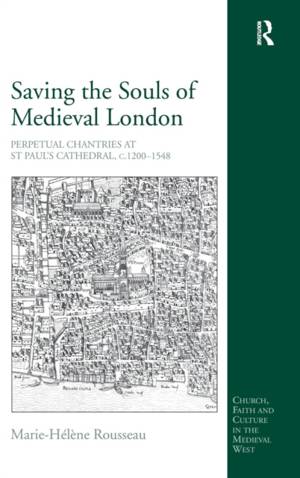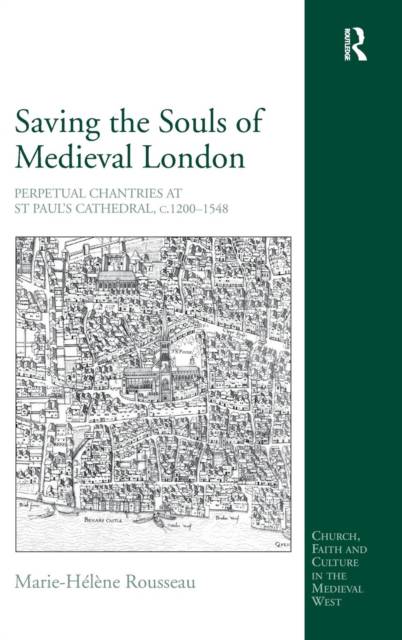
- Retrait gratuit dans votre magasin Club
- 7.000.000 titres dans notre catalogue
- Payer en toute sécurité
- Toujours un magasin près de chez vous
- Retrait gratuit dans votre magasin Club
- 7.000.0000 titres dans notre catalogue
- Payer en toute sécurité
- Toujours un magasin près de chez vous
Saving the Souls of Medieval London
Perpetual Chantries at St Paul's Cathedral, C.1200-1548
Marie-Hélène Rousseau
290,45 €
+ 580 points
Description
St Paul's Cathedral stood at the centre of religious life in medieval London. It was the mother church of the diocese, a principal landowner in the capital and surrounding countryside, and a theatre for the enactment of events of national importance. The cathedral was also a powerhouse of commemoration and intercession, where prayers and requiem masses were offered on a massive scale for the salvation of the living and the dead. This spiritual role of St Paul's Cathedral was carried out essentially by the numerous chantry priests working and living in its precinct. Chantries were pious foundations, through which donors, clerks or lay, male or female, endowed priests to celebrate intercessory masses for the benefit of their souls. At St Paul's Cathedral, they were first established in the late twelfth century and, until they were dissolved in 1548, they contributed greatly to the daily life of the cathedral. They enhanced the liturgical services offered by the cathedral, increased the number of the clerical members associated with it, and intensified relations between the cathedral and the city of London. Using the large body of material from the cathedral archives, this book investigates the chantries and their impacts on the life, services and clerical community of the cathedral, from their foundation in the early thirteenth century to the dissolution. It demonstrates the flexibility and adaptability of these pious foundations and the various contributions they made to medieval society; and sheds light on the men who played a role which, until the abolition of the chantries in 1548, was seen to be crucial to the spiritual well-being of medieval London.
Spécifications
Parties prenantes
- Auteur(s) :
- Editeur:
Contenu
- Nombre de pages :
- 256
- Langue:
- Anglais
- Collection :
Caractéristiques
- EAN:
- 9781409405818
- Date de parution :
- 28-02-11
- Format:
- Livre relié
- Format numérique:
- Genaaid
- Dimensions :
- 156 mm x 234 mm
- Poids :
- 539 g

Les avis
Nous publions uniquement les avis qui respectent les conditions requises. Consultez nos conditions pour les avis.






